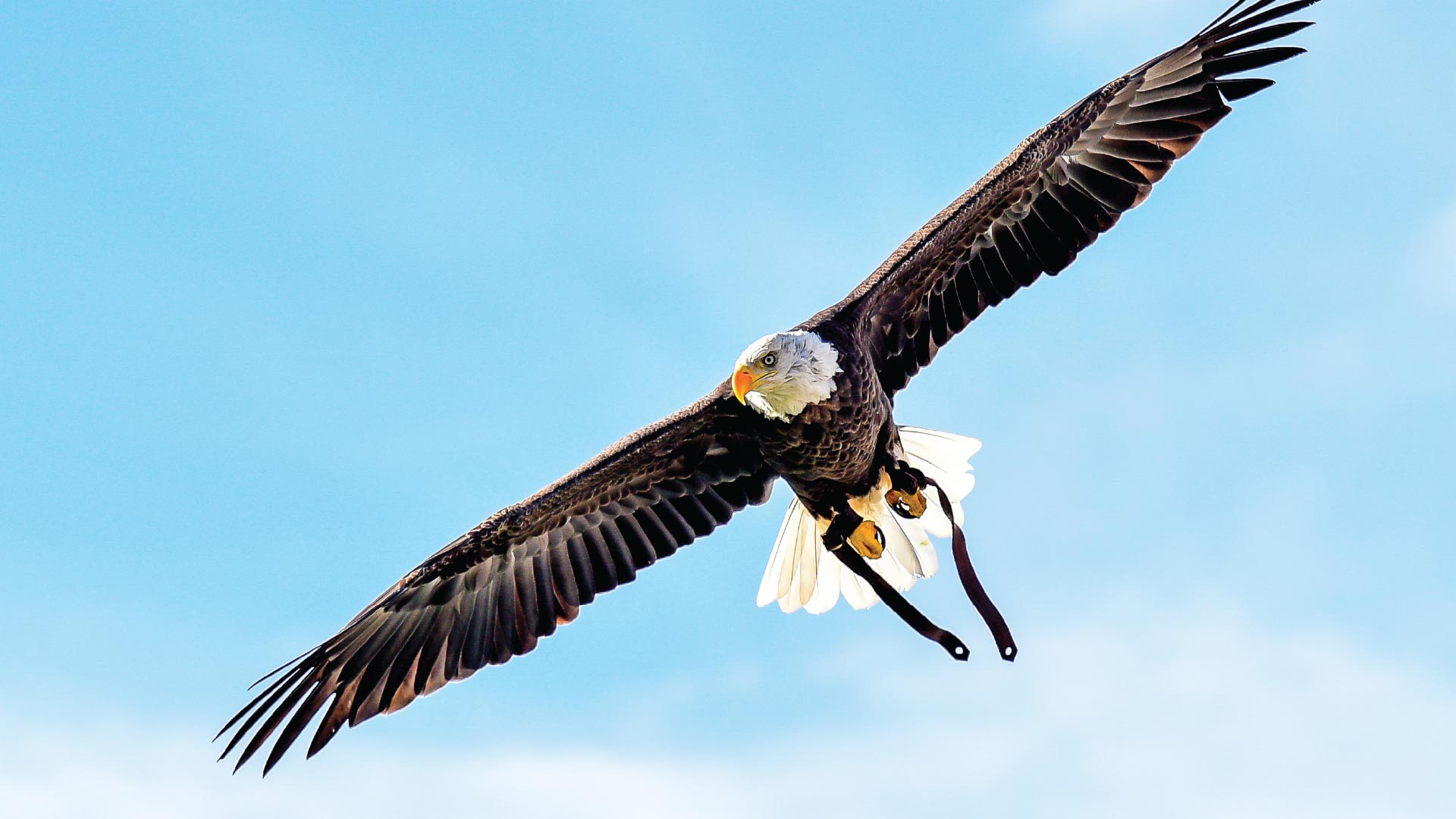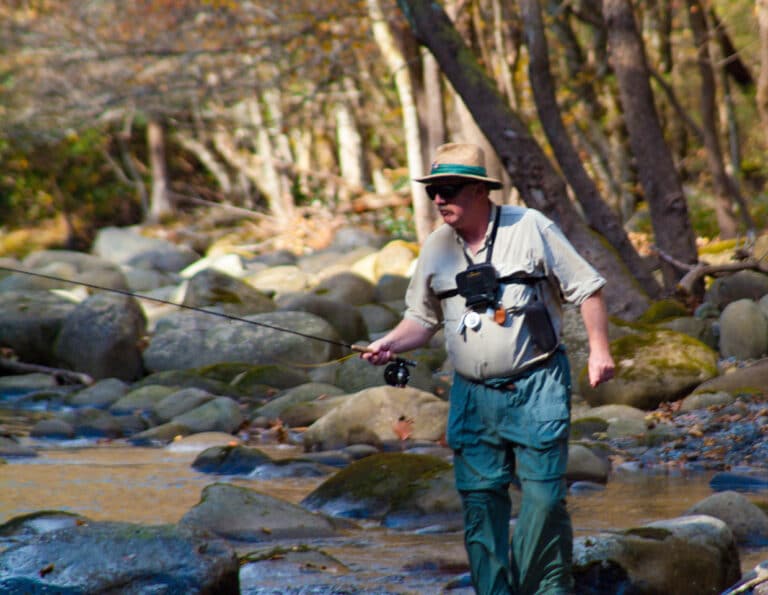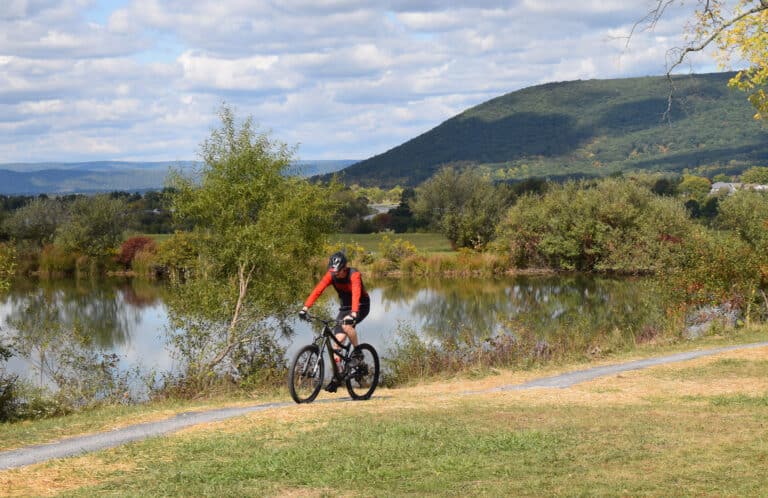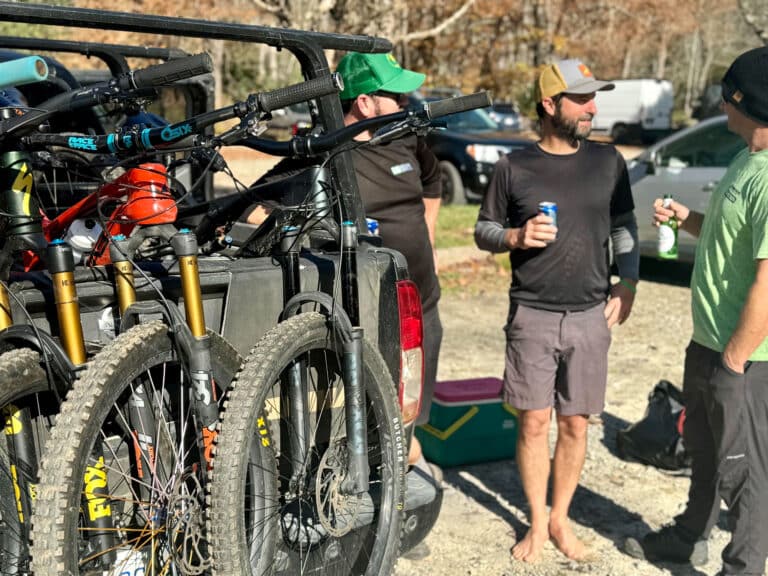America’s Most Celebrated Eagle calls Tennessee Home
If you’ve attended a live professional sporting event in the last 23 years, you may have been lucky enough to watch Challenger the bald eagle take flight.
He’s been a fixture at events across the country, having enjoyed hundreds of plane flights out of his home base near Nashville, via Southwest Airlines, and thousands of hours riding in a specially equipped van, en route to perform his aerial magic.
Now 29, Challenger is the first bald eagle in U.S. history trained to free fly into major sports stadiums, arenas, and ballrooms during the national anthem. His first flight took place in 1995, during the Bassmaster Classic in Greensboro, N.C. Since then, he’s been an inspiring performer at more than 350 events, including five World Series, the NCAA Final Four, Celebrity Fight Nights, numerous NFL match-ups (particularly home games of the Philadelphia Eagles), and even the White House.
Challenger has appeared on national talk shows, in commercials, and in educational films. Even his arrival to airport gates is greeted with an excitement and enthusiasm that rivals most celebrities. Tennesseans may also recognize his image from specialty license plates, and he boasts the unique title as the only animal to ever have a specialty coin with his image printed by the U.S. Mint. Challenger was also in attendance for a historic milestone for his species, when bald eagles were removed from the endangered species list in 2007.
Perhaps his most important role is that of ambassador for the American Eagle Foundation, a non-profit organization established in 1985 to protect and preserve bald eagles and other birds of prey.
Located in Pigeon Forge, the AEF has served as Challenger’s home for almost three decades. He was first discovered in Louisiana at only a few weeks of age, having been blown out of his mother’s nest. For several months, Challenger was hand-raised by humans who released him back into the wild that same year, but who unknowingly kept him too long for Challenger to develop his natural survival instincts. After several unsuccessful attempts at re-introduction into the wild, he was brought to Al Cecere, the founder, president, and CEO of AEF.
When Challenger, who was named for the fallen space shuttle, arrived uninjured in 1989, Cecere had an idea: why not train Challenger to free fly during the national anthem, as a way to raise awareness about the then-endangered species while also paying patriotic tribute? He and his staff began to train Challenger in falconry style, which is based on food-based rewards and positive reinforcement.
After a few years, the six-pound eagle had learned the routine. Now, he performs across the country almost every week of the year except during the summer, when he is molting.
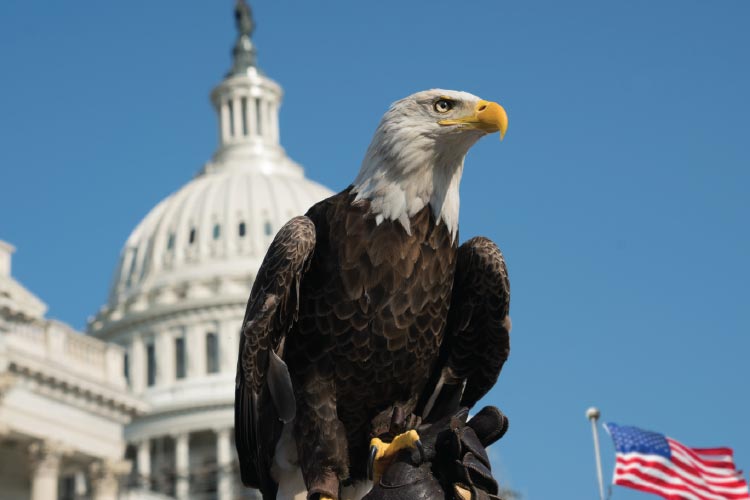
Once an event is lined up by AEF and individual teams/organizations (which cover travel costs for Challenger and his team while also donating to AEF), five AEF staff members accompany him on the road. Challenger’s special carrier, handled by two staff members, is dark inside, to keep him calm. The interior also has a perch as well as a sliding window. Challenger’s team books the front two bulkhead coach seats for his carrier, with a staff member sitting beside him and additional team members in the rows behind and adjacent. Often, Southwest flight crews will let Cecere take the microphone to give a brief talk about Challenger once the plane is airborne.
Cecere, who is 70, always travels with Challenger; Cecere’s daughter, Laura Sterbens, typically travels with him as well. “It’s amazing how many millions of people he’s inspired, not just sports fans, but military members and everyday people,” Cecere says.
Wherever he is performing on a given day, Challenger typically takes flight from a higher location than ground level. It’s a path he’s familiar with, as he’s already been through several rounds of rehearsals the previous day as well as the morning of the event. The idea is for Challenger to know all of the elements, so if a singer will be standing on the field, or if fireworks will be going off, he’ll be prepared as he spreads his six-foot wingspan and takes flight. Challenger is outfitted with two GPS trackers, clipped to his tail feathers in case he decides to fly beyond the stadium, but Cecere says they have never needed them.
At a baseball game, Cecere will typically stand on the pitcher’s mound, with Laura next to him, holding a lure, which is swung in a circular motion to attract Challenger’s attention. When Challenger sees the lure, he knows a treat is not far behind (he is also trained to specific whistles as well as hand motions).
Once he’s released, Challenger flies either directly to Cecere or he takes one or two circles around the arena, whichever path he chooses. When he successfully lands on Cecere’s glove, Challenger earns his favorite snack: Atlantic wild-caught salmon (purchased at Whole Foods, along with bottled Fiji water). Three other handlers are positioned on the field, all wearing headsets, so if Challenger is confused about where to go, they can assist him. Because birds have to gradually descend from heights, sometimes Challenger overshoots his landing, in which case he’ll make one more loop before settling on to the trainer’s outstretched glove.
After the event is over, Challenger will often pose for photos, fluffing his feathers for the camera. Then, it’s back to the hotel to rest before another flight and performance in a new city.
Bald eagles can live up to 50 years or more in captivity, and Challenger shows no signs of slowing down. At the AEF, which has released over 450 eaglets into the wild through their rehabilitation and breeding programs, Challenger is flown every day for exercise and to build his stamina for when he takes the stage.
“Remember what the eagle stands for—independence—and yet the eagle was almost lost because of our negligence,” Cecere says. “We came together as a country and brought it back from the brink, and now it’s flourishing across the country again. Challenger is our ambassador for what it is that we do.”
